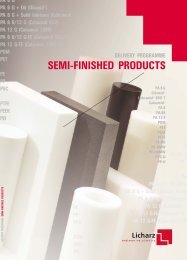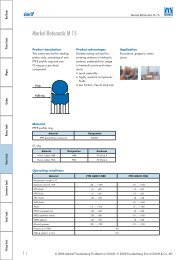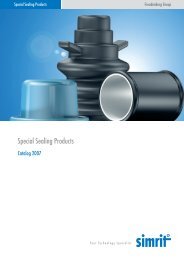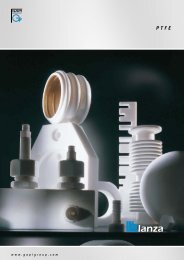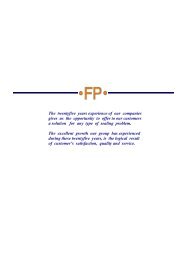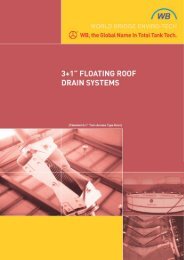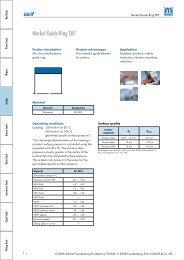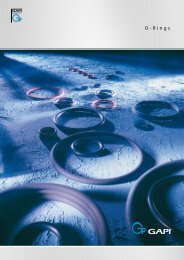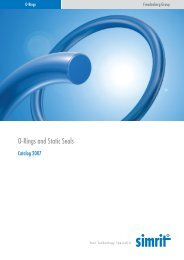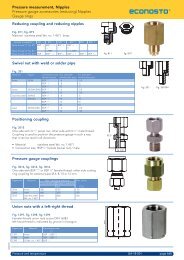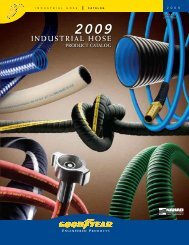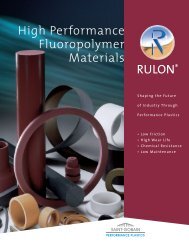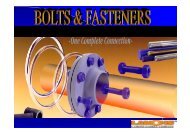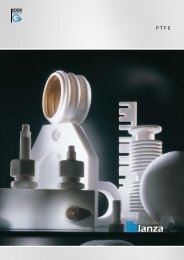Oleodinamica/Pneumatica Hydraulic/ Pneumatic
Oleodinamica/Pneumatica Hydraulic/ Pneumatic
Oleodinamica/Pneumatica Hydraulic/ Pneumatic
Create successful ePaper yourself
Turn your PDF publications into a flip-book with our unique Google optimized e-Paper software.
AnELLI RASCHIATORI<br />
Nel campo dei cilindri oleodimanici si è sempre<br />
data grande importanza alle guarnizioni cercando<br />
di adottare materiali e profili adatti a condizioni di<br />
esercizio sempre più gravose.<br />
Queste indicazioni hanno creato la necessità di<br />
pensare anche all’importanza degli anelli raschiatori<br />
finanziando adeguatamente studi e ricerche<br />
sistematiche che ne valutassero il comportamento e<br />
le relative conseguenze.<br />
Dal lato stelo l’ingresso di polveri abrasive provoca<br />
infatti un deterioramento della tenuta e degli<br />
elementi di guida.<br />
Questo grave inconveniente ha portato gradualmente<br />
all’abbandono dei raschiatori in gomma sintetica in<br />
favore di quelli in poliuretano molto più resistenti<br />
all’usura in presenza di fanghi, sabbie ecc... e quindi<br />
di efficacia nel tempo molto più lunga.<br />
L’accesso di queste particelle inquinanti, oltre che<br />
attraverso lo stelo, può avvenire anche dal lato<br />
statico del raschiatore. Diventa quindi necessario<br />
prevedere un profilo che tenga conto di questa<br />
evenienza e che preveda un vero e proprio spigolo di<br />
tenuta sul lato esterno.<br />
Infine, ogni raschiatore di ultima generazione è<br />
provvisto, lungo tutta la corona circolare interna, di<br />
una serie di rilievi che hanno una duplice funzione:<br />
– compensare i disallineamenti dello stelo<br />
esercitando una funzione stabilizzatrice;<br />
− evitare che si crei una pressione residua di<br />
valore crescente tra guarnizione e raschiatore<br />
che nel medio periodo tenderebbe ad espellere<br />
quest’ultimo dalla sede.<br />
<strong>Oleodinamica</strong> & <strong><strong>Pneumatic</strong>a</strong><br />
WIPER RInGS<br />
Understandably, in the field of hydraulic cylinders, a<br />
great deal of attention has always been devoted to<br />
seals, and to trying to make use of the most suitable<br />
compounds and profiles to withstand increasingly<br />
demanding operating conditions.<br />
This led us to reconsider the importance of wear<br />
rings and subsequently to provide considerable<br />
financing for studies and long-term research to<br />
assess their performance and its implications.<br />
As for the rod, external abrasive dusts cause wear of<br />
the seal and of the wear rings.<br />
This serious disadvantage has led to the gradual<br />
replacement of synthetic rubber wipers by<br />
polyurethane ones, which are much more resistant to<br />
wear in muddy or sandy environments and therefore<br />
o fer more lasting performances.<br />
Dirt particles can enter the system not only through<br />
the rod, but also through the static side of the wiper<br />
ring. The design of the profile should therefore take<br />
this possibility into account and should have a true<br />
sealing edge on the external side.<br />
Lastly, each new generation wiper ring is embossed<br />
with a series of bumps with a double function along<br />
the whole inner circular crown:<br />
– to act as a stabilizer to compensate for rod<br />
misalignments;<br />
− to prevent growing residual pressure between<br />
the seal and the wiper ring which would cause<br />
extrusion in the mid-term.



